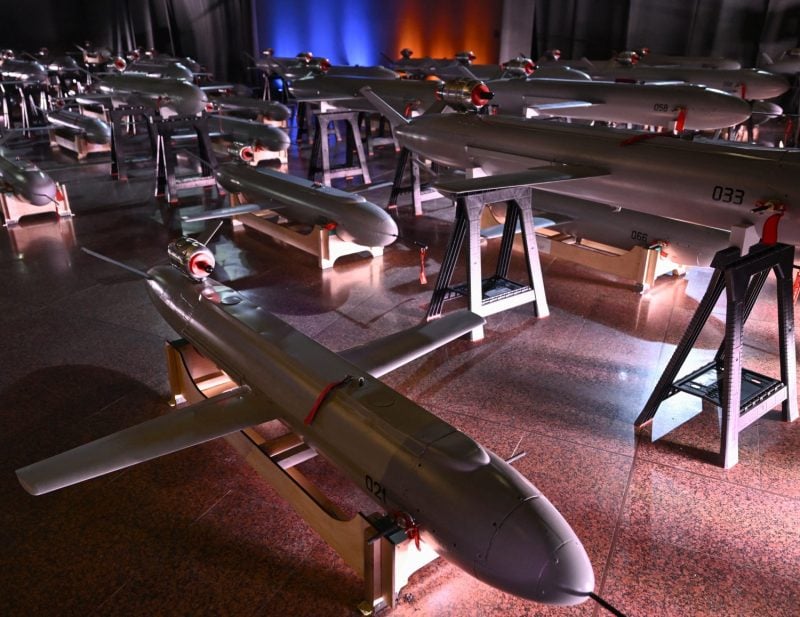Trump Unveils Sweeping Reciprocal Tariff Plan

Trump Unveils Sweeping Reciprocal Tariff Plan
U.S. officials will set tariff rates in the coming months, with sweeping ramifications for global trade.
U.S. President Donald Trump, joined by U.S. Commerce Secretary Howard Lutnick, delivers remarks after signing a presidential memo on reciprocal tariffs at the White House in Washington on Feb. 13. Andrew Harnik/Getty Images
U.S. President Donald Trump’s early trade moves were merely a prelude to what came Thursday: the unveiling of his broader vision for a new era of global trade relations. The White House announced that it would impose “fair and reciprocal” tariffs on all countries that impose duties on U.S. goods.
“On trade, I have decided for purposes of fairness that I will charge a reciprocal tariff, meaning whatever countries charge the United States of America, we will charge them. No more, no less,” Trump said in the Oval Office upon signing a presidential memorandum.
U.S. President Donald Trump’s early trade moves were merely a prelude to what came Thursday: the unveiling of his broader vision for a new era of global trade relations. The White House announced that it would impose “fair and reciprocal” tariffs on all countries that impose duties on U.S. goods.
“On trade, I have decided for purposes of fairness that I will charge a reciprocal tariff, meaning whatever countries charge the United States of America, we will charge them. No more, no less,” Trump said in the Oval Office upon signing a presidential memorandum.
The memo directs U.S. Commerce Secretary Howard Lutnick and Trade Representative Jamieson Greer, both still unconfirmed by the Senate, to provide a country-by-country assessment within 180 days to determine whether reciprocal tariffs are necessary. A White House official told reporters on Thursday that foreign nations would be given the opportunity to negotiate the duties that they could face. Lutnick said the soonest the tariffs could be in place is April 2.
Trump’s move represents a radical challenge to existing trade rules set under the World Trade Organization. And it does not spare Washington’s partners. U.S. allies are often “worse than our enemies” on trade, Trump said, with presidential trade advisor Peter Navarro singling out the European Union as being guilty of “pernicious” trade deficits.
One of Trump’s main goals is to reduce the U.S. trade deficit, a major grievance of his administration. But ultimately, Trump made it clear that he hopes these levies force companies to relocate to the United States, saying, “If you build your product in the United States, there are no tariffs.”
Read more in today’s World Brief: Trump Unveils Plan to Levy Reciprocal Tariffs on U.S. Allies, Competitors.
FP’s Lili Pike contributed to this report.
This post is part of FP’s ongoing coverage of the Trump administration. Follow along here.
Alexandra Sharp is the World Brief writer at Foreign Policy. X: @AlexandraSSharp
More from Foreign Policy
-

Russian President Vladimir Putin looks on during a press conference after meeting with French President in Moscow, on February 7, 2022. The Domino Theory Is Coming for Putin
A series of setbacks for Russia is only gaining momentum.
-

The container ship Gunde Maersk sits docked at the Port of Oakland on June 24, 2024 in Oakland, California. How Denmark Can Hit Back Against Trump on Greenland
The White House is threatening a close ally with a trade war or worse—but Copenhagen has leverage that could inflict instant pain on the U.S. economy.
-

Donald Trump speaks during an event commemorating the 400th Anniversary of the First Representative Legislative Assembly in Jamestown, Virginia on July 30, 2019. This Could Be ‘Peak Trump’
His return to power has been impressive—but the hard work is about to begin.
-

US Secretary of State Marco Rubio greets employees at the State Department in Washington, DC, on January 21, 2025. The National Security Establishment Needs Working-Class Americans
President Trump has an opportunity to unleash underutilized talent in tackling dangers at home and abroad.









Join the Conversation
Commenting on this and other recent articles is just one benefit of a Foreign Policy subscription.
Already a subscriber?
.
Subscribe
Subscribe
View Comments
Join the Conversation
Join the conversation on this and other recent Foreign Policy articles when you subscribe now.
Subscribe
Subscribe
Not your account?
View Comments
Join the Conversation
Please follow our comment guidelines, stay on topic, and be civil, courteous, and respectful of others’ beliefs.
Change your username |
Log out
Change your username:
CANCEL
Confirm your username to get started.
The default username below has been generated using the first name and last initial on your FP subscriber account. Usernames may be updated at any time and must not contain inappropriate or offensive language.